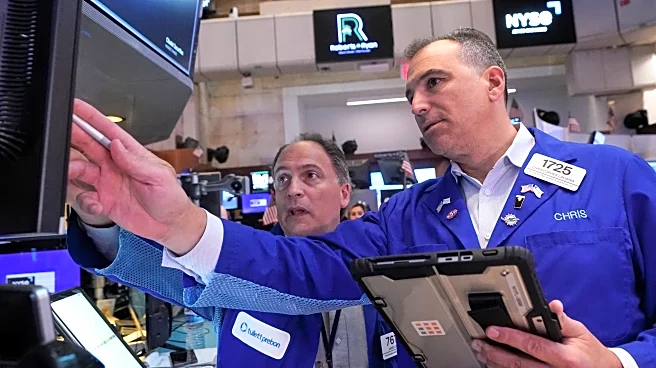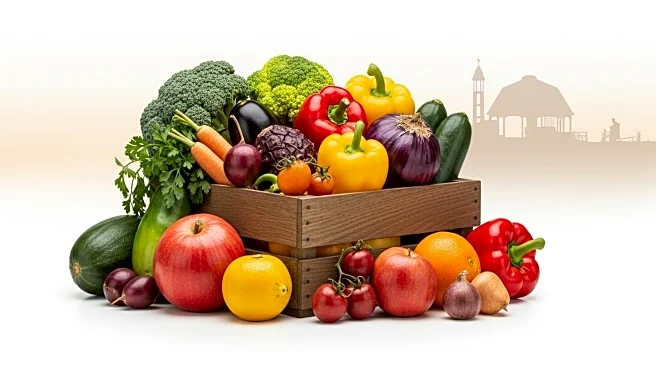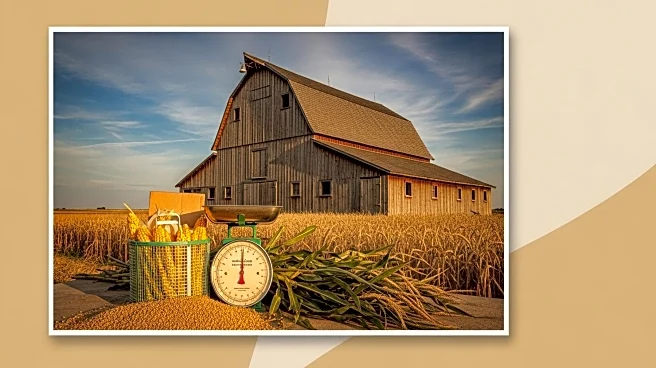What is the story about?
What's Happening?
At a recent conference held at the Federal Reserve Bank of Chicago, economists, farmers, and agricultural business owners from the Midwest discussed the significant impact of tariffs imposed during the Trump administration on the agricultural sector. The conference, which included participants from states like Iowa, Illinois, Indiana, Michigan, and Wisconsin, focused on how these tariffs, along with inflation and interest rates, have affected agriculture in the region. Notably, tariffs on China, Canada, and Mexico have increased the cost of agricultural products such as fertilizer, while retaliatory tariffs have hurt American farmers who export crops. The impact on soybeans has been particularly severe, with China not purchasing any U.S. soybeans this year, compared to buying half of the American-produced soybeans last year. This has left Midwest farmers, who produce a significant portion of the nation's soybeans, struggling to find alternative markets.
Why It's Important?
The tariffs have created a challenging economic environment for U.S. farmers, particularly in the Midwest, a region heavily reliant on agriculture. The increased costs of inputs like fertilizer and machinery, coupled with reduced export opportunities, have put financial pressure on farmers. This situation is exacerbated by the fact that while American corn exports have reached record volumes, the profits have not matched due to inflation-adjusted costs. The uncertainty surrounding trade policies has also made international partners wary of doing business with American companies, potentially leading to long-term shifts in global trade relationships. The economic strain on farmers could have broader implications for the U.S. economy, affecting rural communities and the agricultural supply chain.
What's Next?
Farmers and industry stakeholders are likely to continue advocating for policy changes that could alleviate the financial burdens imposed by tariffs. The Federal Reserve's recent modest reduction in interest rates offers some relief, but it may not be sufficient to offset the increased costs faced by farmers. As the agricultural sector seeks to adapt, there may be increased pressure on policymakers to negotiate trade agreements that restore market access and reduce input costs. Additionally, the industry may explore diversifying export markets to mitigate the impact of lost sales to China.
Beyond the Headlines
The ongoing trade tensions highlight the complex interplay between domestic policy decisions and global economic dynamics. The tariffs have not only affected immediate economic conditions but also raised questions about the long-term viability of current trade strategies. The situation underscores the need for a balanced approach that considers both the protection of domestic industries and the maintenance of healthy international trade relationships. The agricultural sector's experience may serve as a case study for other industries facing similar challenges.
AI Generated Content
Do you find this article useful?














